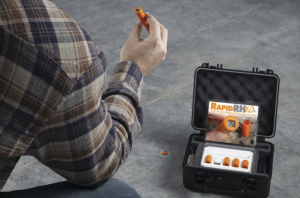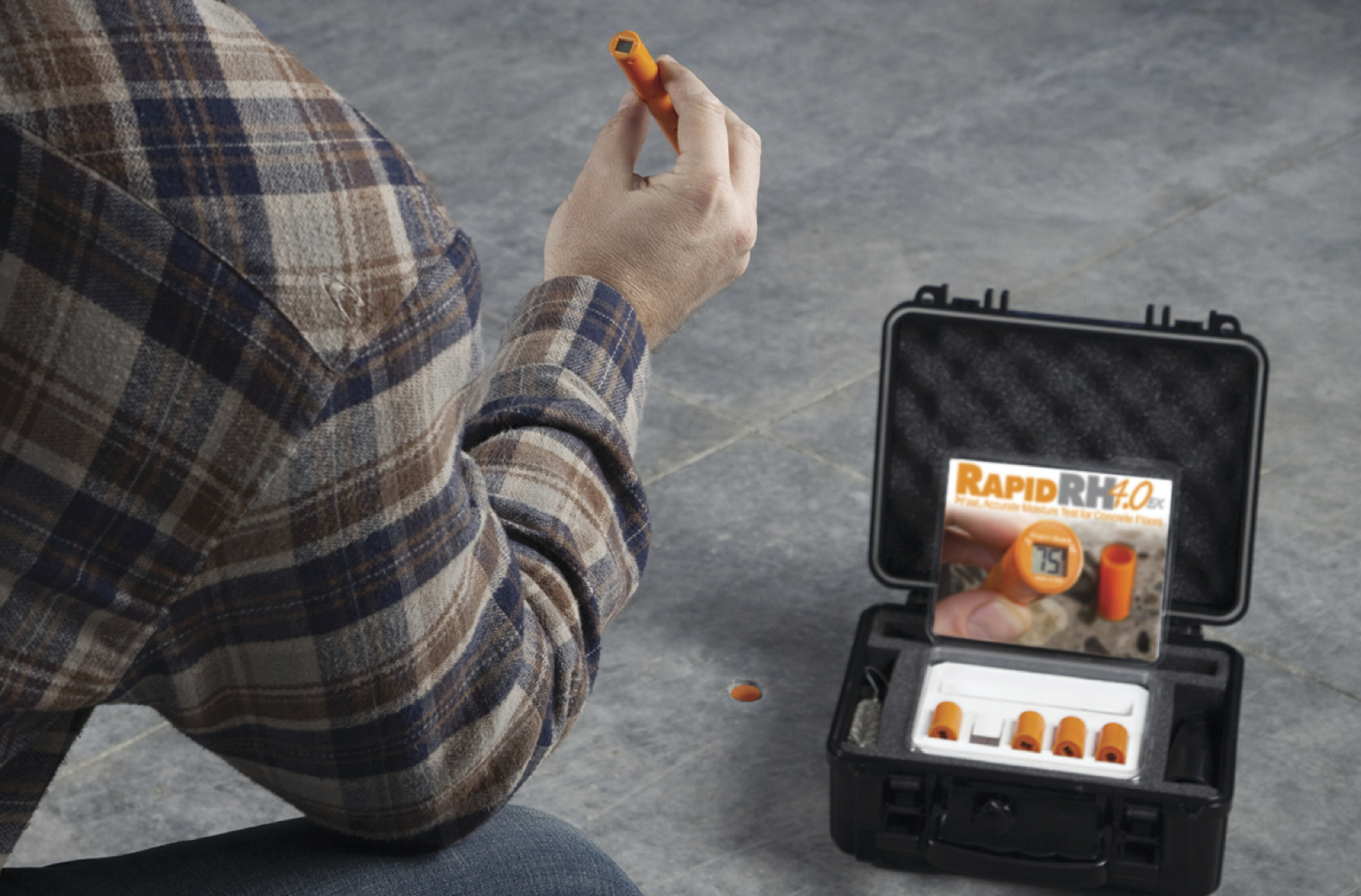The primary function of a well-built and well-designed roofing system is to prevent water from moving through into the building below it. Yet, as the Rosemont, Ill.-based National Roofing Contractors Association has observed, an increasing number of “good roofs” installed on concrete roof decks have failed in recent years. Blistering, de-bonding and substrate buckling have occurred with no reports of water leakage. Upon investigation, the roofing materials and substrates are found to be wet and deteriorated.

Wagner Meters offers moisture-detection meters for concrete. The meters are designed to save time and money on a project or job site.
WHY DOES THIS MOISTURE BECOME TRAPPED?
It often starts with the schedule. In construction, time is money, and faster completion means lower cost to the general contractor and owner. Many construction schedules include the installation of the roof on the critical path because the interior building components and finishes cannot be completed until the roof has been installed. Therefore, to keep the project on schedule, roofers are pressured to install the roof soon after the roof deck has been poured. Adding to the pressure are contracts written so the general contractor receives a mile- stone payment once the roof has been installed and the building has been topped out.
Historically, roofers wait a minimum of 28 days after the roof deck is poured before starting to install a new roof. This is the concrete industry’s standard time for curing the concrete before testing and evaluating the concrete’s compressive strength. Twenty-eight days has no relation to the dryness of a concrete slab. Regardless, after 28 days the roofer may come under pres- sure from the general contractor to install the roof membrane. The concrete slab’s surface may pass the historic “hot asphalt” or the ASTM D4263 Standard “plastic sheet” test, but the apparently dry surface can be deceptive. Curing is not the same as drying, and significant amounts of water remain within a 28-day-old concrete deck. Depending on the ambient conditions, slab thickness and mixture proportions, the interior of the slab will likely have a relative humidity (RH) well over 90 percent at 28 days.
FROM WHERE DOES THE WATER COME?
Upon placing the concrete slab, the batch water goes to several uses. Portland cement reacts with water through the hydration process, creating the glue that holds concrete together. The remaining water held in capillary pores can be lost through evaporation, but evaporation is a slow, diffusion-based process. The diffusion rate of concrete is governed by the size and volume of capillary pores which, in turn, are controlled by the water/cement (w/cm) ratio. The total volume of water that will be lost is controlled by the degree of hydration, which is primarily related to curing and w/cm.
A 4-inch-thick concrete slab releases about 1 quart of water for each square foot of surface area. If a roof membrane is installed before this water escapes the slab, it can become trapped and collect beneath the roof system. The water does not damage the concrete, but it can migrate into the roofing system—and that’s when problems begin to occur. For instance, moisture that moves into the roofing system can:
- Reduce thermal performance of the insulation.
- Cause the insulation, cover board, adhesive or fasteners to lose strength, making the roofing system susceptible to uplift or damage from wind, hail or even foot traffic.
- Lead to dimensional changes in the substrate, causing buckling and eventually damaging the roof membrane.
- Allow mold growth.
A number of factors compound the problem. In buildings where a metal deck is installed, moisture cannot exit the slab through its bottom surface. Instead, the moisture is forced to exit the slab by moving upward. Eliminating one drying surface almost doubles the length of drying time of a concrete slab. The small slots cut in ventilated metal decking have little effect on reducing this drying time.
Ambient conditions also affect the drying rate of a concrete slab since it readily absorbs and retains moisture. Additional moisture may enter an unprotected roof slab from snow cover, rain or dew. Even overcast days will slow the rate of drying.
A MODERN-DAY PROBLEM
Before the introduction of today’s low-VOC roofing materials, historic roof systems didn’t experience as many of these moisture issues. Typically, they were in- stalled onto concrete decks on a continuous layer of hot asphalt adhesive that bonded the insulation to the deck. This low-permeable adhesive acted as a vapor retarder and limited the rate of moisture migrating from the concrete into the roofing assembly. As a result, historic roof systems were somewhat isolated from moisture coming from the concrete slab.
Many of today’s single-ply roof membranes are not installed with a vapor retarder. Moisture is able to migrate from the concrete slab into the roof materials. Modern insulation boards are often faced with moisture-sensitive paper facers and adhered to substrates with moisture-sensitive adhesives. These moisture-sensitive paper facers and adhesives are causing many of the problems.
Rene Dupuis of Middleton, Wis.- based Structural Research Inc. recently presented a paper to the Chicago Roofing Contractors Association on the subject. Some of his findings include the following:
- Due to air-quality requirements, government regulations curtailed the use of solvent-based adhesives because they are high in VOCs. Consequently, manufacturers changed to water-based adhesives because they are lower in VOCs, have low odor, are easy to apply and pro- vide more coverage.
- There can be several drawbacks to water-based bonding adhesives. One is that they may be moisture sensitive. Moisture and alkaline salts migrating into roof systems from concrete decks can trigger a negative reaction with some water-based adhesives. This reaction can cause the adhesives to revert to a liquid, or it may alter or delay the curing of some foam-based adhesives. Some adhesive manufacturers have recognized these problems and have be- gun reformulating their adhesives to address these drawbacks.
- Negative reactions also occur when moisture-sensitive paper facers come into contact with moisture. This reaction typically results in decay, mold growth and loss of cohesive strength. Moisture in the roof system may also cause gypsum and wood-fiber-based cover boards to lose cohesive strength.
Dupuis noted moisture from any source can compromise adhered roof systems with wind uplift when attached to paper insulation or gypsum board. He also said facer research clearly shows paper facers suffer loss of strength as moisture content increases.
PHOTOS: Wagner Meters



Be the first to comment on "Better Understand Why the Combination of Moisture and Concrete Roof Decks Is Troublesome"